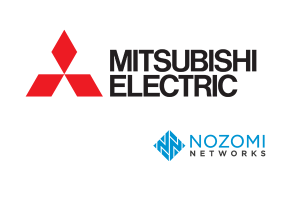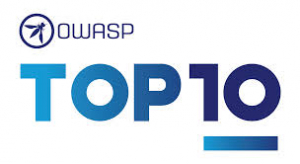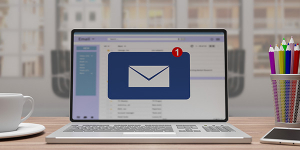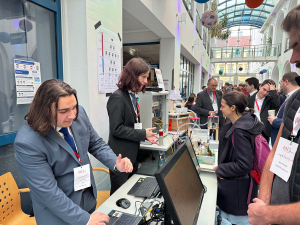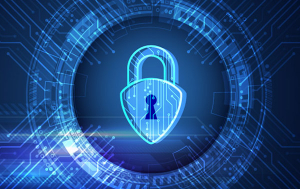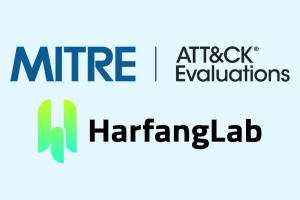 https://www.ikarussecurity.com/wp-content/uploads/2025/10/mail-security-firewall.jpg
400
600
IKARUS
https://www.ikarussecurity.com/wp-content/uploads/2025/02/IKARUS-Security-Software-4-1.png
IKARUS2025-10-06 16:04:082025-10-06 16:04:08The Interaction Between Firewall and Email Security
https://www.ikarussecurity.com/wp-content/uploads/2025/10/mail-security-firewall.jpg
400
600
IKARUS
https://www.ikarussecurity.com/wp-content/uploads/2025/02/IKARUS-Security-Software-4-1.png
IKARUS2025-10-06 16:04:082025-10-06 16:04:08The Interaction Between Firewall and Email SecurityElevation of Privilege (EoP) describes a process in which a user or process in a system or application gains higher privileges than originally intended. These additional privileges can enable access to the operating system, specific files within an application, or even administrative functions.
In the context of security vulnerabilities and cyberattacks, this means that attackers can gain extensive control over a system.
Risks of Elevation of Privilege
Exploiting such a security vulnerability could allow an account to gain elevated administrative rights or access information that is not intended for it. Within the hierarchy of permissions, several system levels are distinguished:
- Normal user rights: Access to personal files and applications is permitted. No ability to make system-wide changes or access other users’ data.
- Administrative rights: Includes higher access privileges, enabling changes to security-critical system components and data.
- System or root rights: The highest level of privileges, granting full access to the operating system and all data.
Elevation of Privilege could not only allow access to sensitive or critical internal data but also enable changes to crucial system settings or the direct installation of malicious software. Depending on the scope and severity of the vulnerability, it may even be possible to comprehensively manipulate the system and cause significant damage.
According to the 2021 edition of the “Top 10 Web Application Security Risks” by OWASP (Open Worldwide Application Security Project), insufficient and flawed access controls rank as the number one security issue identified. [1]
Typical Methods of Elevation of Privilege
Not every EoP attack results from a software bug. Frequently, misconfigurations, poor application design, and the failure to adjust default settings are responsible for allowing users to access excessive data and settings. Information gained through these weaknesses often facilitates further steps to attack a target. [2]
- Local Privilege Escalation: The attack starts with an existing account on the target system and exploits vulnerabilities or misconfigurations to gain access to components beyond the account’s privilege level.
- Kernel Exploits: Kernel exploits take advantage of vulnerabilities in the operating system kernel to gain higher privileges, such as root access. An example is an unpatched security flaw in the Windows kernel, which could enable an attacker to access administrative functions.
- Application Exploits: Vulnerabilities in applications can also be exploited to gain elevated privileges. A common example is SQL injection, which allows attackers to read, modify, or control databases and user data.
- Social Engineering: Social engineering is an attempt to trick employees into revealing sensitive information, for example through phishing. Attackers may also attempt to manipulate employees by presenting false facts and information, for example to gain extended access rights from IT support.
Potential Consequences of a Successful Elevation of Privilege Attack
A successful Elevation of Privilege (EoP) attack can lead to severe consequences for the affected systems and organizations. Attackers may pursue various goals, including:
- Disclosure of Internal Information: Internal information can be used for direct modifications to the system or leveraged in subsequent attacks.
- Data Loss and Data Misuse: Attackers may access, manipulate, or delete sensitive data, potentially leading to breaches of confidentiality or compliance violations.
- Installation of Malware: Elevated privileges enable attackers to modify systems and install malware or backdoors. These backdoors allow attackers to re-enter the system at any time or even sell access to other cybercriminals.
- Damage to System Integrity: With administrative rights, attackers can compromise the entire system’s integrity, potentially causing significant outages or data losses.
- Extortion and Ransomware: EoP can also pave the way for ransomware attacks, where attackers encrypt systems and demand a ransom to restore access.
Countermeasures and Protection Against Elevation of Privilege
Protecting against Elevation of Privilege (EoP) attacks is a complex task, but systematic prevention and security measures can significantly reduce the risk, even with relatively simple measures.
- Regular Software Updates: Many EoP attacks exploit known vulnerabilities, making regular updates for operating systems and software essential. This includes enabling automatic updates, prioritizing security patches, and replacing end-of-life products that no longer receive updates.
- Limiting User Privileges: Adopting the principle of least privilege ensures that users have only the permissions necessary for their work. Root or admin accounts should never be used for routine activities on servers or workstations. Regularly review and adapt permissions to remove outdated or unnecessary rights.
- Employee Training and Awareness: Employees are often the first line of defense against EoP attacks. They should receive regular training on social engineering techniques like phishing and other potential attack vectors to quickly recognize manipulation attempts. Emphasize the importance of good password hygiene, such as using strong and unique passwords.
- Monitoring and Logging: Continuously monitor systems for suspicious activities through tools like log management and anomaly detection. Real-time alerts can flag unusual behavior, such as unexpected privilege changes or multiple failed login attempts, enabling a quick response.
- Strong Authentication Mechanisms: Good password hygiene and multi-factor authentication (2FA or MFA) make it significantly harder for attackers to gain unauthorized access. Develop and enforce password and authentication policies and review them regularly.
- Network Segmentation: Separate sensitive systems and data from the rest of the network to limit the impact of an attack. Access to critical systems should be minimized and secured with measures like VPNs or specific access controls.
- Protection of Sensitive Data and Configuration Files: Restrict access to configuration and log files to authorized users only. Encrypt sensitive data and maintain regular backups to ensure data integrity in the event of an attack.
- Incident Response and Emergency Plans: Develop a detailed plan for responding to security incidents, including the escalation of privilege-related breaches. Prepare teams with scenarios to ensure a swift and effective response during emergencies.
Conclusion
Elevation of Privilege represents a serious threat to IT security, posing significant risks to the systems of businesses and organizations. The consequences of a successful attack can be far-reaching, including data loss, reputational damage, and severe financial losses. Effective protection against EoP requires a combination of well-implemented security principles, regular updates, technical safeguards, and employee awareness. By proactively addressing these risks, organizations can significantly reduce their exposure to EoP attacks and bolster their overall cybersecurity posture.
This might also interest you:
Incident response planning: step-by-step emergency plan
Cyber Kill Chain: Defend better and faster against targeted attacks
Business Email Compromise: Risks, trends and defences
Sources:

